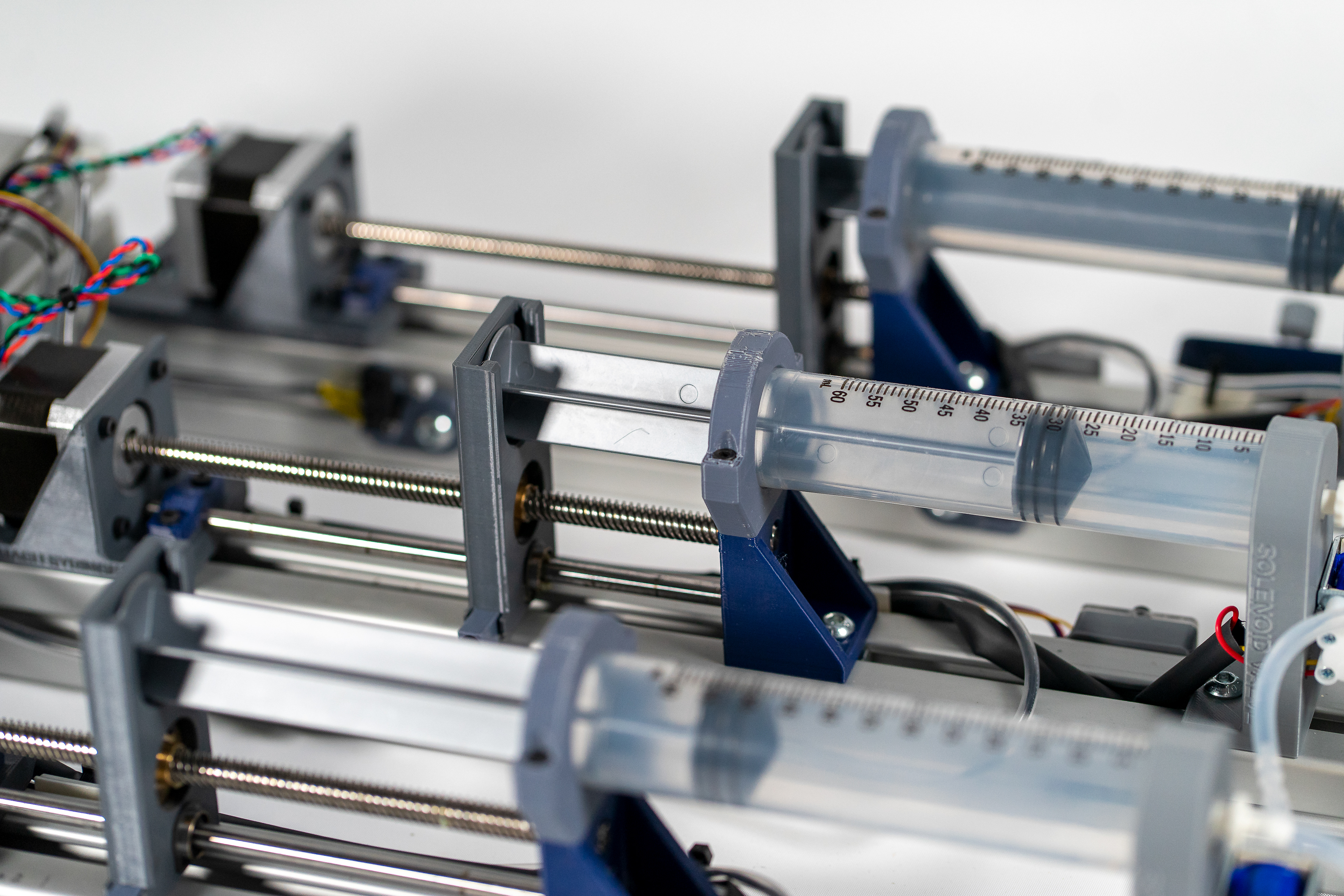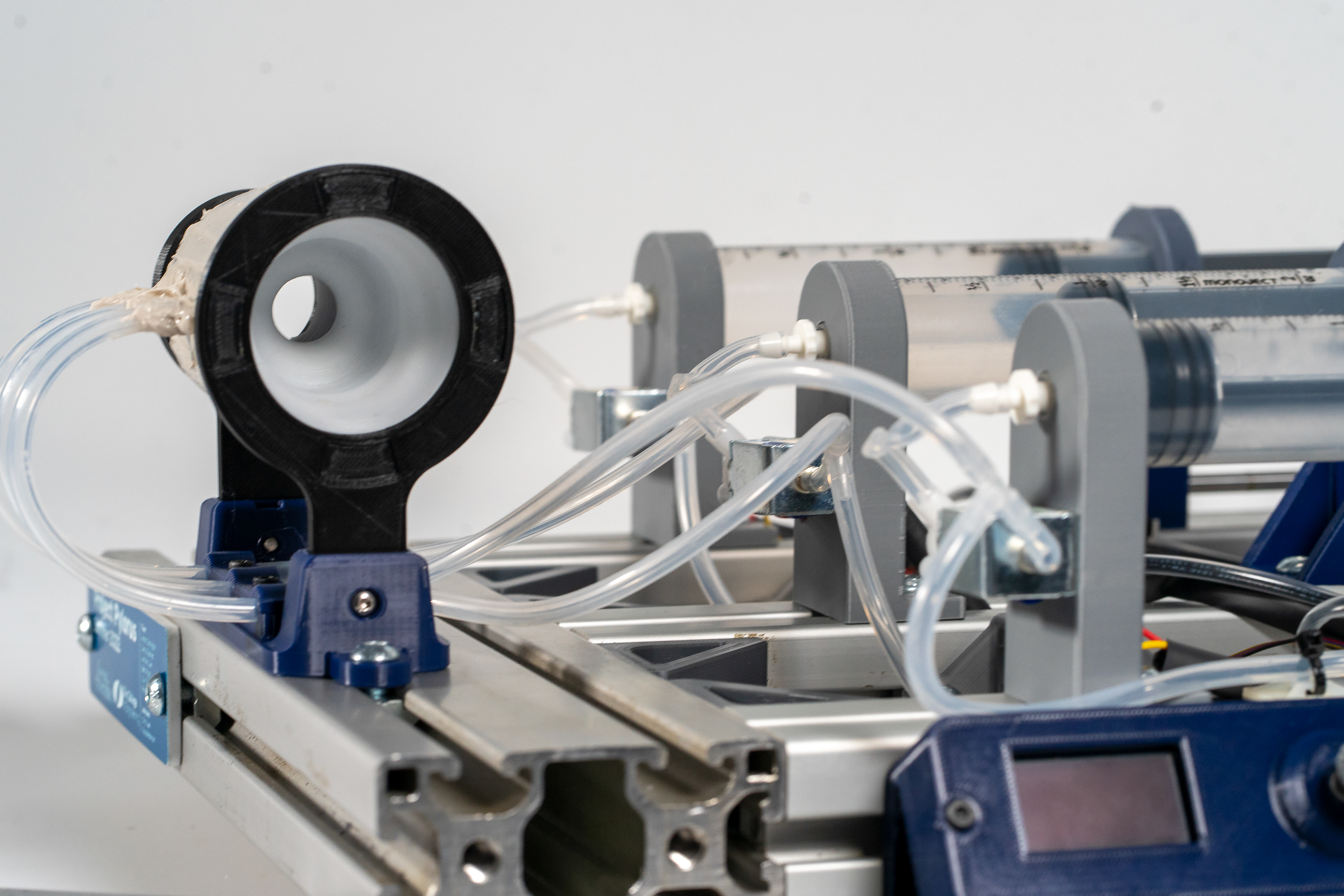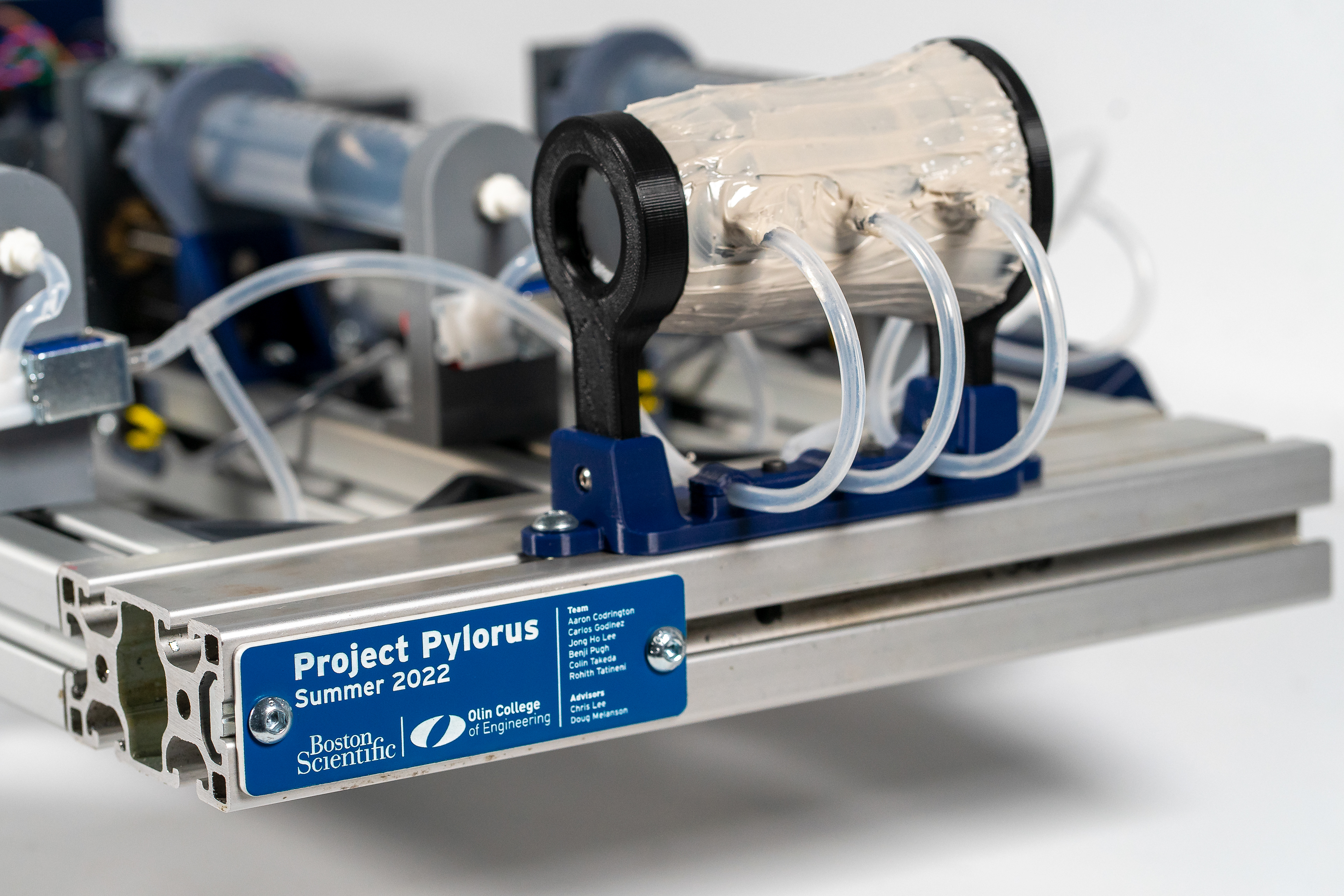Project Objective
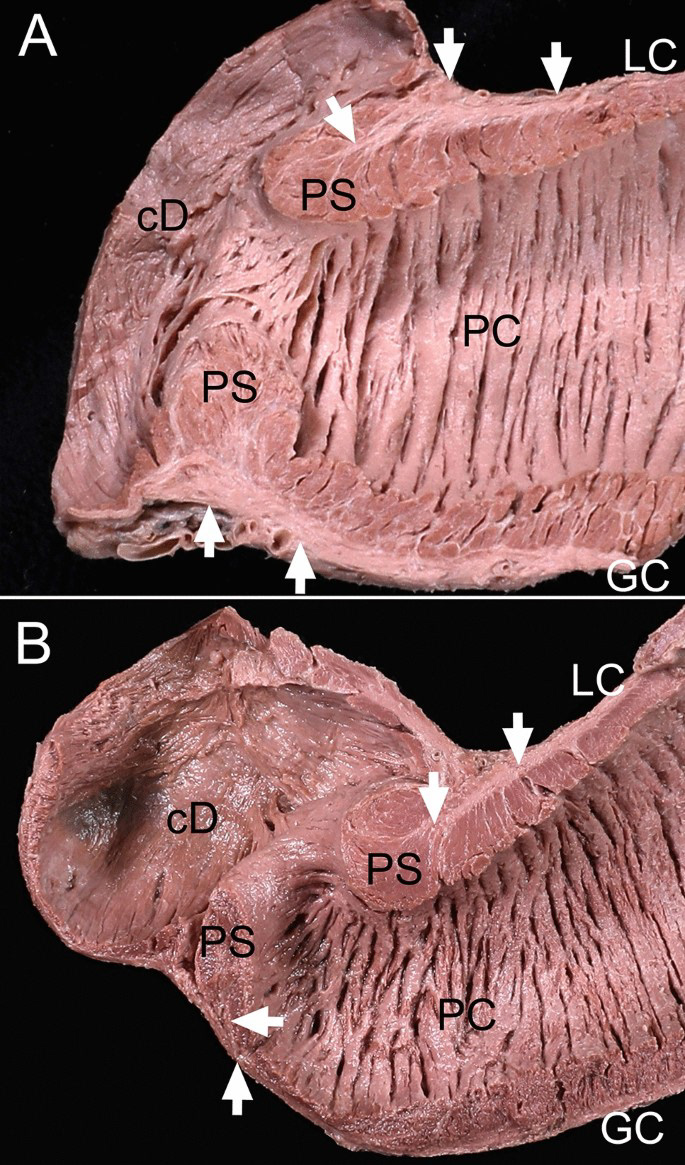

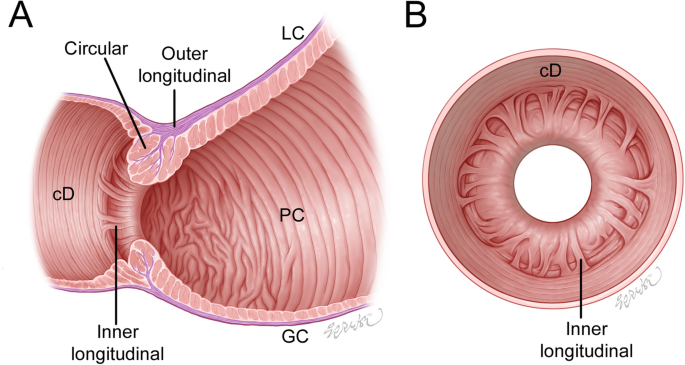
The pyloric sphincter - located between the antral stomach and the entrance of the small intestine - is responsible for the movement of food between the stomach and small intestine.
Our team was tasked with the objective of creating a mechanical pylorus test platform to stress test Boston Scientific products. Until this point, the Boston Scientific Corporation had relied on animal testing to safely evaluate the efficacy of their devices.
A three-month-long effort was made to create a system that resembled a human pylorus with clinically accurate dimensions and peristalsis movements.
Responsibilities

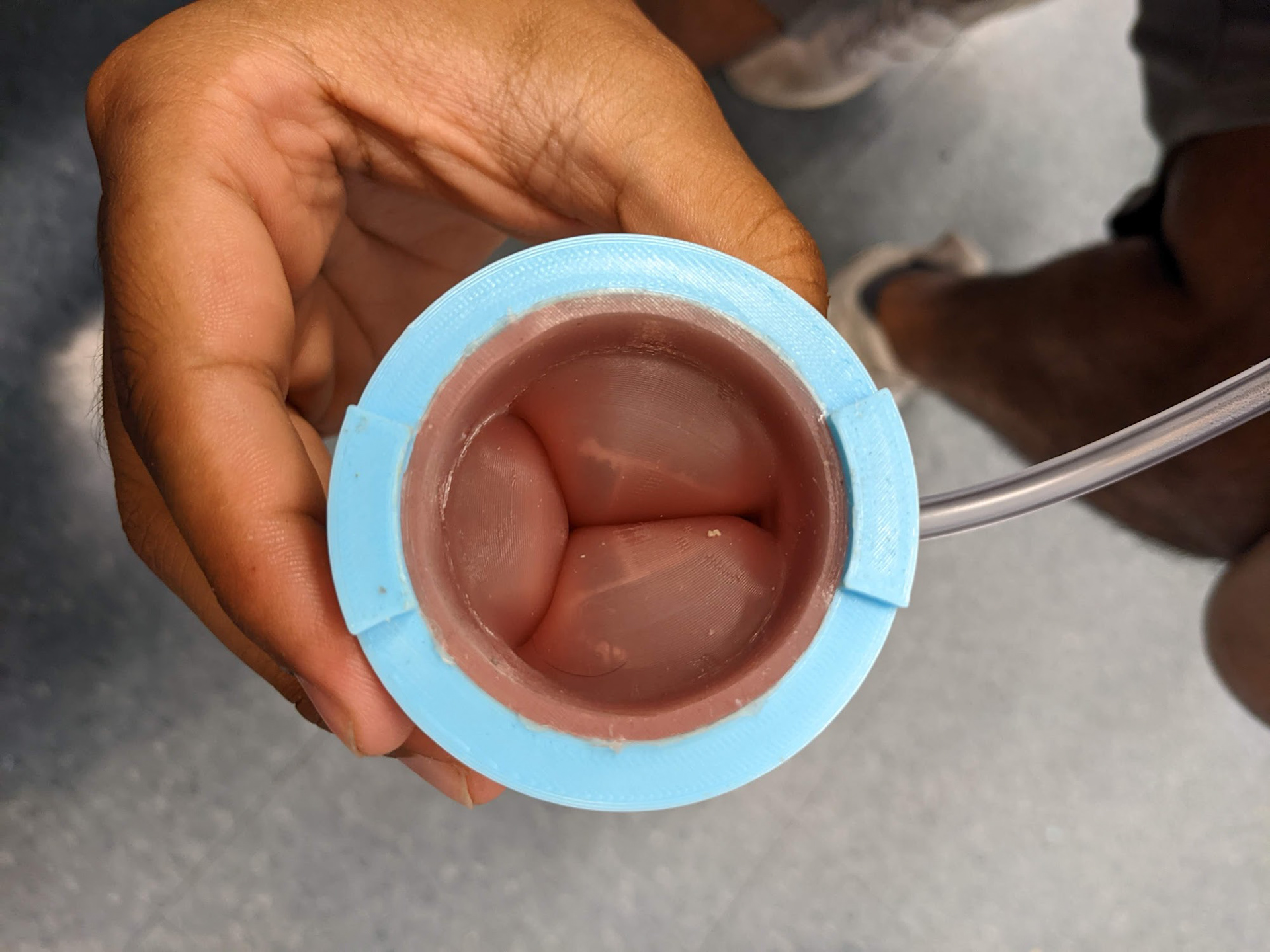
My responsibilities for the project revolved around the manufacture and testing of the sphincter mechanism that replicated the pyloric peristalsis.
Our sphincter model uses pneumatic pressure to inflate bellows that expand and imitate the muscular contractions of the sphincter.
I spent most of my time manipulating the silicone molding solution to imitate the soft inner lining of the stomach and pyloric sphincter. It is important to cast this silicone precisely and uniformly to ensure minimal air leakage and consistent bellow size.
After each cast, I revisited the OnShape part to create new revisions and more accurate/viable iterations. Throughout the development, there were a plethora of issues ranging from air leaks, less-than-optimal force readings, and silicone adhesion issues.
In the end, our team created 19 different iterations of the sphincter, each an improvement upon each other in some shape or form.
Final Deliverable
Final Deliverables to Boston Scientific


